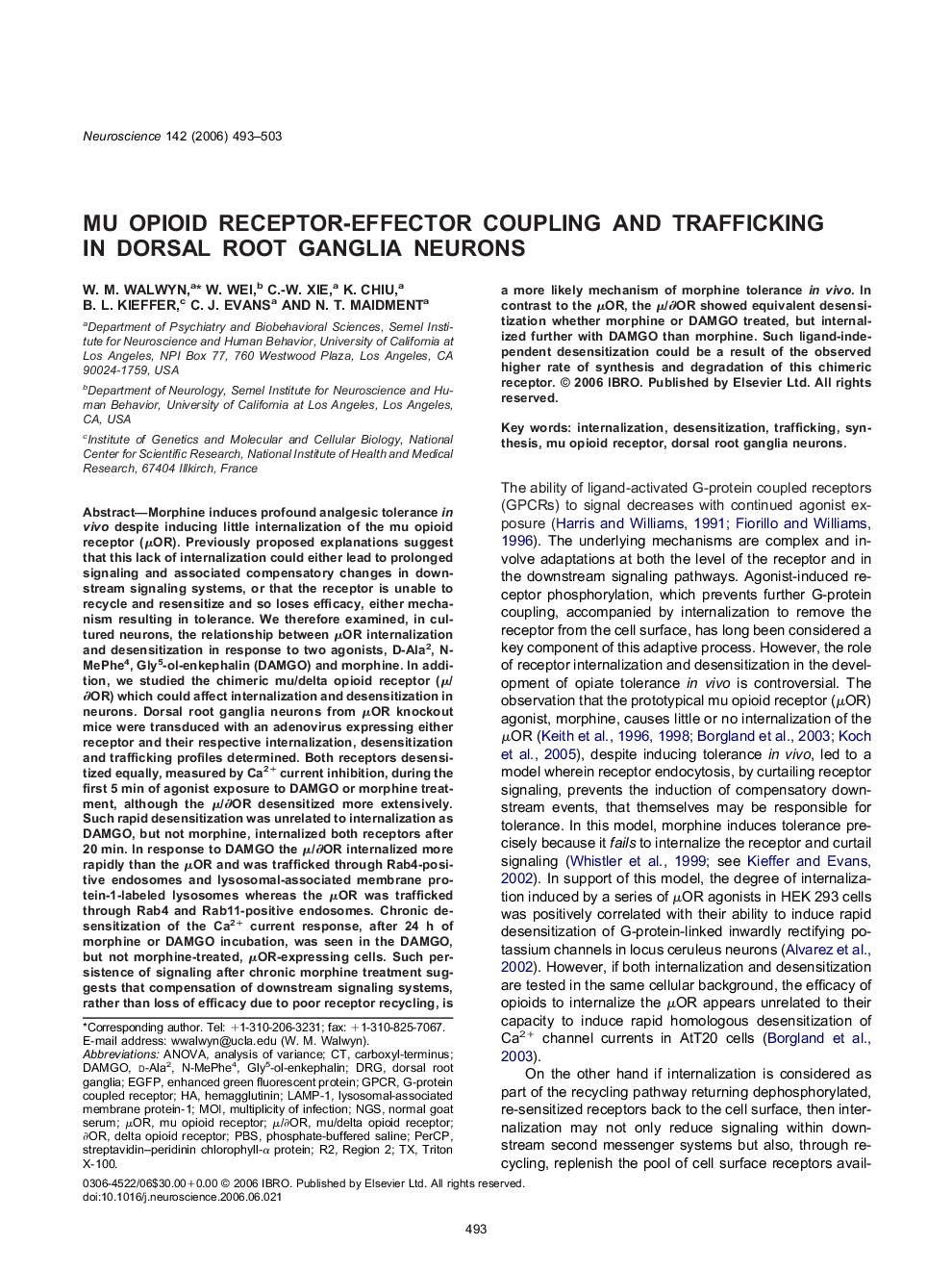| کد مقاله | کد نشریه | سال انتشار | مقاله انگلیسی | نسخه تمام متن |
|---|---|---|---|---|
| 4341511 | 1295838 | 2006 | 11 صفحه PDF | دانلود رایگان |

Morphine induces profound analgesic tolerance in vivo despite inducing little internalization of the mu opioid receptor (μOR). Previously proposed explanations suggest that this lack of internalization could either lead to prolonged signaling and associated compensatory changes in downstream signaling systems, or that the receptor is unable to recycle and resensitize and so loses efficacy, either mechanism resulting in tolerance. We therefore examined, in cultured neurons, the relationship between μOR internalization and desensitization in response to two agonists, D-Ala2, N-MePhe4, Gly5-ol-enkephalin (DAMGO) and morphine. In addition, we studied the chimeric mu/delta opioid receptor (μ/∂OR) which could affect internalization and desensitization in neurons. Dorsal root ganglia neurons from μOR knockout mice were transduced with an adenovirus expressing either receptor and their respective internalization, desensitization and trafficking profiles determined. Both receptors desensitized equally, measured by Ca2+ current inhibition, during the first 5 min of agonist exposure to DAMGO or morphine treatment, although the μ/∂OR desensitized more extensively. Such rapid desensitization was unrelated to internalization as DAMGO, but not morphine, internalized both receptors after 20 min. In response to DAMGO the μ/∂OR internalized more rapidly than the μOR and was trafficked through Rab4-positive endosomes and lysosomal-associated membrane protein-1-labeled lysosomes whereas the μOR was trafficked through Rab4 and Rab11-positive endosomes. Chronic desensitization of the Ca2+ current response, after 24 h of morphine or DAMGO incubation, was seen in the DAMGO, but not morphine-treated, μOR-expressing cells. Such persistence of signaling after chronic morphine treatment suggests that compensation of downstream signaling systems, rather than loss of efficacy due to poor receptor recycling, is a more likely mechanism of morphine tolerance in vivo. In contrast to the μOR, the μ/∂OR showed equivalent desensitization whether morphine or DAMGO treated, but internalized further with DAMGO than morphine. Such ligand-independent desensitization could be a result of the observed higher rate of synthesis and degradation of this chimeric receptor.
Journal: Neuroscience - Volume 142, Issue 2, 13 October 2006, Pages 493–503